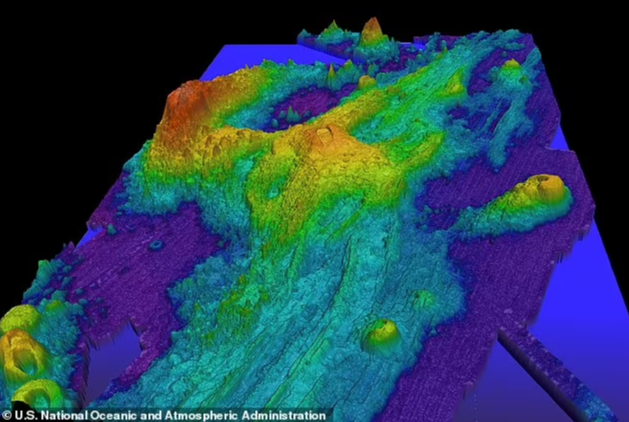Signs of Imminent Eruption at Axial Seamount Off the West Coast

Axial Seamount, a massive underwater volcano located approximately 300 miles off the coast of Oregon, is showing signs of an impending eruption, the Daily Mail reports.
This towering volcano, standing at 3,600 feet and stretching across 1.25 miles, lies 4,626 feet beneath the Pacific Ocean. Recently, scientists have observed significant swelling and rumbling beneath the seafloor, signaling a buildup of magma.
Experts predict that Axial Seamount may erupt by the end of 2025, with some experts noting that its past eruptions in 1998, 2011, and 2015 indicate a pattern of frequent activity. However, despite these signs, volcanologists have expressed little concern, noting that the volcano is well-monitored and poses minimal risk to public safety.
Mike Poland, a scientist at the Yellowstone Volcano Observatory, called Axial Seamount one of the most closely monitored submarine volcanoes in the world. He explained that the eruption would likely resemble a typical Hawaiian lava flow rather than an explosive event. Such eruptions, characteristic of shield volcanoes, tend to be non-violent, with lava flowing steadily out of the caldera.
Axial Seamount, part of the Juan de Fuca Ridge, a chain of undersea volcanoes stretching from Oregon to Alaska, is a young shield volcano. Unlike explosive eruptions, shield volcanoes generally emit slower, calmer lava flows that are not typically associated with major hazards to surrounding populations.
The volcano’s recent activity, including swelling of the seafloor and an increase in seismic tremors, indicates that magma is being replenished. According to Bill Chadwick, a researcher at Oregon State University, the seafloor has been inflating at an accelerating rate in recent months, suggesting that an eruption could be imminent. In fact, scientists have compared this inflation to the “ballooning” of the volcano as magma builds up beneath the surface until pressure forces a release.
Despite the increasing activity, scientists remain confident that the eruption, when it occurs, will be a manageable event. The immense water pressure at such depths inhibits explosive eruptions, and the rapid cooling of magma in contact with the cold ocean water ensures that the lava will solidify quickly, creating pillow lavas that pose minimal danger to the environment.
The ongoing monitoring of Axial Seamount is conducted through a combination of cutting-edge tools, including a remotely operated vehicle (ROV) and a fiber-optic cable system that provides real-time data on the volcano’s activity. This extensive monitoring has allowed scientists to track the volcano’s movements with unprecedented accuracy, offering valuable insights into submarine volcanic behavior.
While the eruption is expected to be relatively minor in terms of impact, it provides a unique opportunity for scientists to study volcanic processes in real-time. The insights gained from Axial Seamount’s monitoring could help improve eruption forecasting for other volcanoes around the world, both underwater and on land.









The latest news in your social feeds
Subscribe to our social media platforms to stay tuned